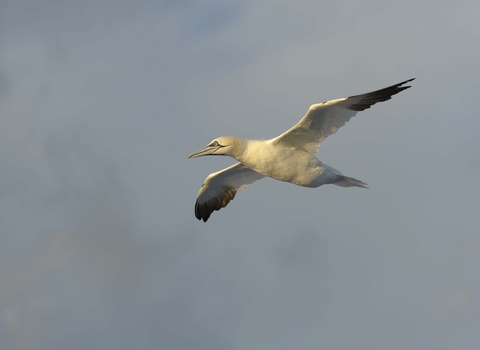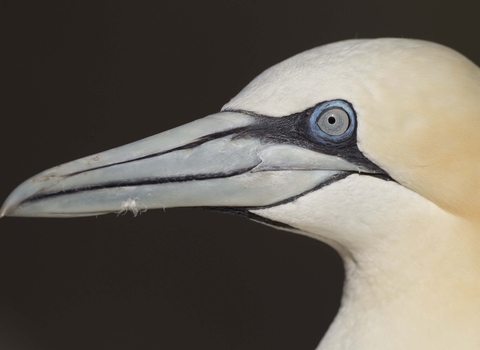
©Chris Gomersall/2020VISION

©Peter Cairns/2020VISION
Northern gannet
Scientific name
Morus bassanusWhen to see
January to AugustSpecies information
About
One of our largest seabirds, gannets feed on fish, which they catch by diving head-first into the sea, their wings folded right back. Diving from heights of 30m, they can hit the water at speeds of up to 60mph. They have an extensive network of air-sacs between their muscles and skin to help cushion this impact.How to identify
The gannet is easily identified: a big, white bird with black wingtips and a yellow head. It can be spotted circling high above the waves before performing its characteristic fishing dive.Distribution
Nests on coastal cliffs around the north of the UK, sometimes in large colonies like those on some Scottish islands, and at sites in Wales, North East England and the Channel Islands. Can be seen around most of our coasts.In our area
The Isles of Scilly are home to breeding populations of thirteen species with around 20,000 birds in all. Gannets don't breed on Scilly, but they do visit in large numbers to feast on the small fish that are shoaling around the islands. The best time to enjoy them is the spring and summer, from April to July, when you'll see the biggest diversity. Kittiwakes loiter around the islands, whilst fulmars hang on the wind off their cliffs. Shags stand sentry on the rocks, and puffins, guillemots and razorbills hang out on their islands. Gulls swoop around the harbour and bays and shout out their noisy calls over Hugh Town.
Did you know?
220,000 pairs of gannets nest around our coasts - that's 55% of the world's gannet population. Bass Rock in Scotland is a famous nesting colony where masses of birds can be seen and, very definitely, heard!The Isles of Scilly are home to breeding populations of thirteen species with around 20,000 birds in all. Gannets don't breed on Scilly, but they do visit in large numbers to feast on the small fish that are shoaling around the islands. The best time to enjoy them is the spring and summer, from April to July, when you'll see the biggest diversity. Kittiwakes loiter around the islands, whilst fulmars hang on the wind off their cliffs. Shags stand sentry on the rocks, and puffins, guillemots and razorbills hang out on their islands. Gulls swoop around the harbour and bays and shout out their noisy calls over Hugh Town.
